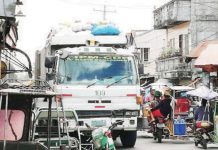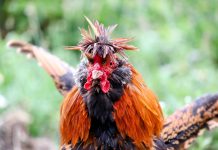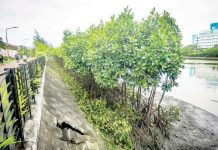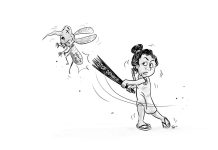
BY DR. JOSE PALU-AY DACUDAO
AFTER the initial termination of Chernobyl’s mammals, wildlife from adjacent areas immigrated in, or got introduced. These and their offspring have thrived, transforming the exclusion zone into a haven of mammalian diversity.
In so doing, these mammalian populations had to overcome the effects of two medium-lived fission products. One is strontium-90 with a half-life of 28.9 years. The second is cesium-137 with a half-life of 30.23. Since we are slightly more than 30 years away from the Chernobyl disaster, it follows that slightly less than half of the original radiative strontium and cesium are still around. That’s still quite a lot.
Strontium belongs to the same group as calcium. It differs from calcium by having a greater mass, but otherwise acts chemically like calcium. The same applies for cesium in relation to potassium.
Thus radioactive strontium is especially dangerous because it mimics calcium and is absorbed by mammals into their bones. Radioactive cesium is also quite dangerous because it mimics potassium which is the main intracellular cation, and thus avidly absorbed by all mammalian cells.
Yet Chernobyl exclusion zone now hosts one of the most diverse and densest population of wild mammals in Europe. How can they withstand the radioactivity?
First, I hypothesize that because of their relatively short natural life span compared to humans (only from three years to ten), most wild mammals do not have time to develop cancer, aplastic anemia, and other blood dyscrasias that are often the cause of death by radioactivity among humans.
However, the wild mammals of Chernobyl exclusion zone are born, mature, give birth to new offspring, all within ten years, several times. They do not die of cancer and blood dyscrasias, because these haven’t had the time to manifest yet and make them ill.
Second, the above mammals have rates of reproduction significantly above that of humans. For example, wild female deer start reproducing at two years old, and have one or two fawns every year thereafter.
Their female offspring repeat the pattern, first reproducing at two years of age. In spite of this high rate of reproduction compared to humans, deer do not overrun any given area in the wild.
Why? Because of various factors that keep their population in check, such as predation, diseases, food supply, finite territories each adult deer maintains, and so on. Thus any given area can only support a limited number of deer, the co-called carrying capacity of that particular area. In case of overproduction of offspring, the ‘extra’ ones do not survive.
Let us say that radioactivity in Chernobyl exclusion zone causes a number of birth defects and associated mortalities among deer fetuses and fawns, while there are also others born and grown normally. These mortalities will fall under the “extra” fawns that will not survive anyway.
The healthy fawns will grow up without competition from these “extras”, and so will survive to reproductive age and satisfy the carrying capacity for the zone. The radioactivity thus removes fawns that won’t survive anyway even without radioactivity.
It would be interesting to put this hypothesis to the test by populating Chernobyl with long-lived mammals with slow reproduction rates such as elephants.
(For comments and suggestions please email to mabuhibisaya2017@gmail.com)/PN







